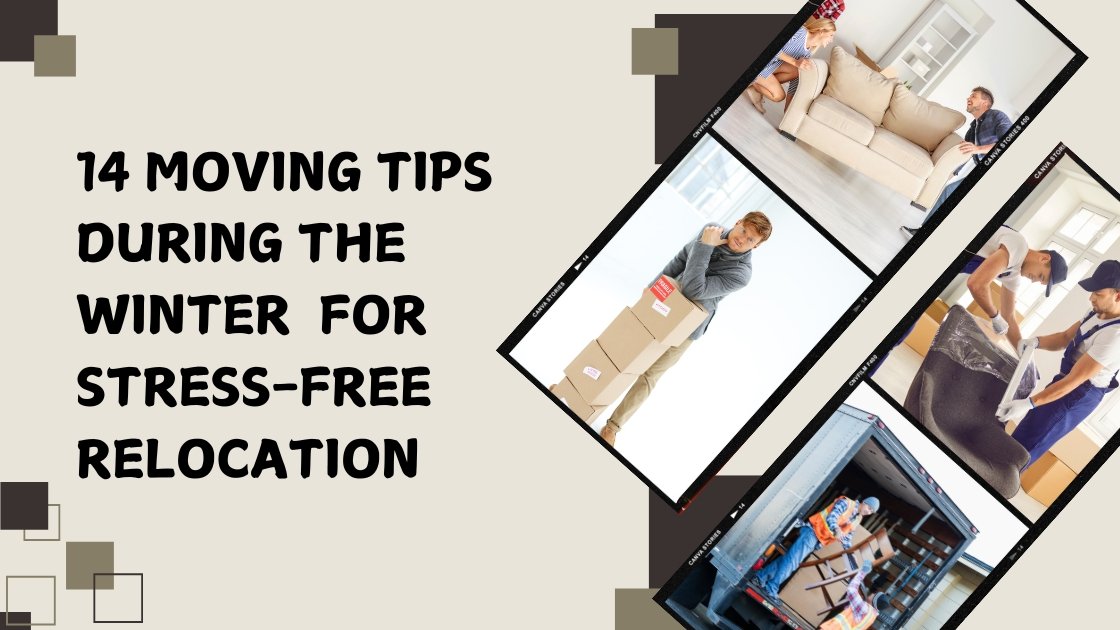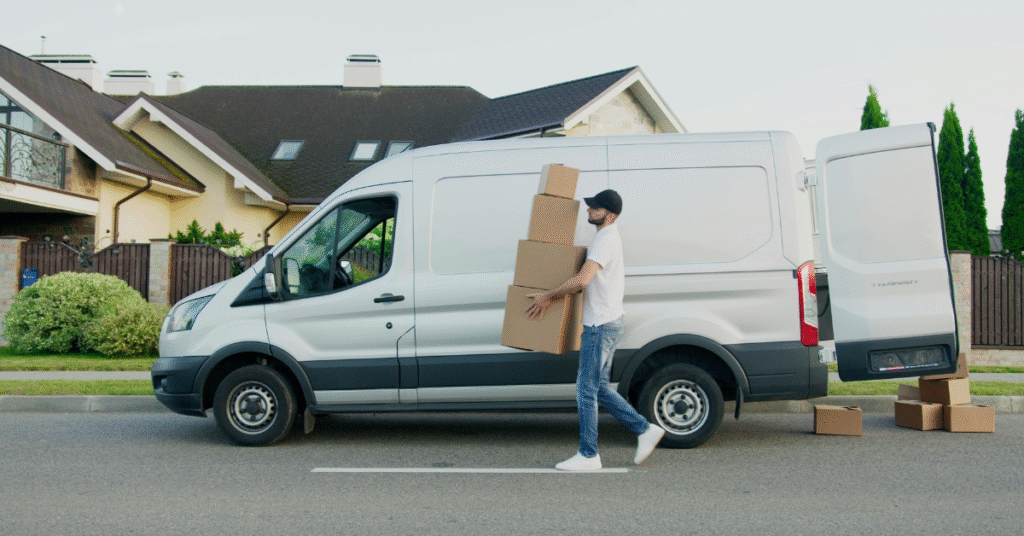Currently Empty: $0.00
14 Moving Tips During the Winter for Stress-Free Relocation
Moving during the winter months can present unique challenges that require careful planning and preparation. Cold weather, snow, and icy conditions can complicate the moving process, but with the right strategies, you can achieve a stress-free relocation. It’s essential to take proactive measures, such as booking your moving services early, packing your belongings securely, and ensuring that utilities are set up in your new home. Additionally, being flexible and ready to adapt to unexpected weather changes is crucial. By following expert advice and best practices, you can navigate the difficulties of winter moving while ensuring that your belongings arrive safely and your transition is as smooth as possible.
Here Are Some 14 Moving Tips to Help You Navigate a Winter Move Smoothly
1. Schedule and Confirm Your Move Early
Timing is crucial when moving during the winter. To avoid the rush and potential scheduling conflicts, book your moving company as early as possible, ideally several weeks or even months in advance. Be sure to confirm your moving date a few days prior to your scheduled move to ensure your moving team is prepared and ready for any weather-related challenges. It’s wise to keep an open line of communication with your moving company to discuss contingencies in case of inclement weather.
2. Sort and Pack ASAP
Start sorting through your belongings as soon as you know your moving date. This gives you ample time to decide what to keep, donate, or discard. Creating a checklist can help you stay organized. Begin by packing non-essential items first, such as seasonal clothing or decor, and leave daily necessities for last. This systematic approach not only eases the packing process but also minimizes stress as you draw closer to your move.
3. Prepare to be Flexible
Winter weather is unpredictable. Snowstorms or freezing temperatures can disrupt your moving plans. Prepare to be flexible with your schedule; having alternate dates in mind can save you from stress if your original plans are affected. Monitor weather forecasts leading up to your moving day, and communicate with your moving team to stay informed about road conditions and delays.
4. Double Pack Your Delicate Items and Electronics
Electronics and delicate items are particularly vulnerable in cold weather. Double pack these items with extra cushioning and use bubble wrap for electronic devices. Make sure to check the user manuals for any specific packing instructions to avoid potential damage. Label these boxes clearly to ensure careful handling during the move. Additionally, consider keeping smaller electronics, like tablets and laptops, in your vehicle instead of the moving truck, where temperatures can drop significantly.
5. Stay Warm and Dry
Of course, you want to protect your valuables, but don’t forget to protect yourself as well. Dress in layers to regulate your body temperature and opt for waterproof clothing and footwear to keep moisture at bay. It’s also advisable to take frequent breaks indoors to warm up and hydrate, as cold temperatures can be deceptively exhausting. Try to start as early in the morning as possible. This way, you’ll have more daylight, which can help to keep you warm.
6. Take Care of Your Belongings
Your belongings deserve special attention during a winter move. Protect fragile items by using high-quality packing materials. Invest in bubble wrap, packing peanuts, and sturdy boxes to safeguard your possessions. It’s also a good idea to use moisture-absorbing products, such as silica gel packs, in boxes to protect against humidity and condensation during transportation.
7. Check the Utilities at Your New Home
Prior to moving day, make sure that all utilities at your new home are set up and operational. This includes checking that the heating system is working and that there is running water. If possible, visit the new home ahead of time to ensure everything is in order. Having utilities ready will provide a comfortable environment upon arrival and reduce the hassle of dealing with cold temperatures and potential emergencies.
8. Prepare Your Home
Ensure your new home is safe and accessible for the moving crew. This includes clearing driveways, walkways, and sidewalks of snow and ice. Use salt or sand to provide traction and prevent slips. Additionally, check the entryways to ensure they are well-lit and free of obstructions. These small preparations can significantly reduce the risk of accidents during the move. Furthermore, consider placing down mats or rugs at entry points to absorb moisture and prevent slippery conditions indoors.
9. Bring Essentials with You
Prepare a “first night” essentials bag that includes everything you’ll need immediately upon arriving at your new home. This should contain warm clothing, personal items, basic toiletries, snacks, and important documents (like IDs and moving paperwork). Having these essentials easily accessible will make settling in easier and more comfortable. Additionally, consider including items such as chargers for your electronics, a flashlight, and a small first aid kit to address any immediate needs.
10. Protect Your Floors
To prevent damage to the floors in both your old and new homes, lay down protective coverings like drop cloths, cardboard, or old blankets in high-traffic areas. This is particularly important in winter when mud and water can be easily tracked indoors. After the move, take time to clean the floors to remove any residual dirt or moisture.Moreover, consider using furniture sliders to move heavy items without scraping the floors, as recommended by various moving experts.
11. Check on Your Car
If you’re driving to your new location, ensure your vehicle is winter-ready. This involves checking tire pressure, fluid levels, and battery health. Consider having your vehicle serviced before the move to avoid breakdowns in harsh weather conditions. Additionally, pack an emergency kit in your car that includes items like a blanket, flashlight, snacks, and a first-aid kit to prepare for unexpected delays.
12. Plan Your Route
Plan your travel route in advance by checking weather conditions and potential road closures. Use GPS or navigation apps that provide real-time traffic updates. If winter storms are expected, consider alternative routes that may be safer and more accessible. Inform someone of your travel plans and estimated arrival time, especially if driving long distances.
13. Pack Extra Safety Items
In addition to regular moving supplies, include extra safety items in your moving kit. These may include an ice scraper, shovel, road flares, and sand or kitty litter for traction. Having these items on hand can be crucial if you encounter slippery roads or find yourself stuck.It’s also wise to carry a first aid kit, flashlight, and blankets in case of emergencies.Moreover, consider packing jumper cables to help start your vehicle if it gets stranded in cold weather.
14. Board Your Pets
Moving can be stressful for pets, so consider arranging for their care on moving day. Whether it’s a trusted friend, family member, or a pet boarding service, keeping pets out of the chaos will help reduce their anxiety and allow you to focus on the move. Additionally, setting up a designated space for your pets in your new home can ease their transition by providing a familiar environment amidst the changes.
Get Professional House Moving Help
Hiring experienced movers who understand the unique challenges of winter relocations can alleviate much of the stress associated with moving. Look for companies that offer specialized winter moving services, as they will be equipped to handle snow and ice. Their expertise will help ensure that your move is executed safely and efficiently. If you’re in need of assistance, consider reaching out to residential local movers in Arlington, TX, who can provide the right support for your winter move. By choosing professionals familiar with winter conditions, you can focus on settling into your new home rather than worrying about the logistics of the move.






